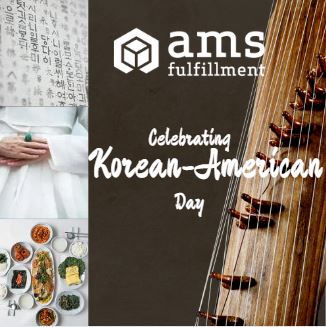
The first wave of immigration began in 1903, when 102 Korean immigrants arrived in Hawaii to work on pineapple and sugar plantations. In the years that followed, Korean Americans became a vital part of Hawaii’s diverse culture, contributing a great deal to the development of Hawaii. Today more than 50,000 Hawaiian residents identify as Korean.
From the University of Hawaii website, we quote the following: “Korean immigrants in Hawaii were living as stateless people for a long time, but they were special because they did not just stay at home only to earn living, but they organized themselves through the churches, establishing schools and social organizations, and actively supporting the independent movements by sending donations to the Korean provisional governments and activists.” To read the entire article featuring Korean women, click [HERE].
At the Boston University website, we read about the second wave of immigration. “Immediately after Korea was liberated from Japan’s annexation in 1945, Korea became a battleground in the U.S and Soviet Union’s power struggle. In 1948, Korea was divided into two political entities—South Korea supported by the United States and a communist government in North Korea supported by the Soviet Union.
“During the Korean War (1950-1953), the second wave of Korean immigrants moved to America. What started as an ideological conflict in the Cold War period became a national calamity killing nearly 55,000 people. During this period, approximately 15,000 Koreans immigrated to the United States. The McCarran and Walter Act of 1952 nullified the Asian immigration ban and made Asian immigrants eligible for citizenship. The second wave consisted of three groups: Korean wives of American soldiers, known as war brides; war orphans adopted by American families; and around 27,000 people composed of students, businessmen, and intellectuals.” We recommend reading more at this [LINK].
Celebrating the Culture
At AMS Fulfillment we know the value not only of a diverse workforce, but of learning about the various cultures and peoples who make up our country. When looking into commemorative days we see how little we know of each other’s history and experience. What challenges have American citizens of Korean ancestry been through? More than a few, with the Korean war the most recent historical trauma for the people. As always, the more we learn, the more we appreciate the strength and endurance of Korean Americans.
We went to the National Today website [LINK] for information about Korean culture and individuals who made an impact. “There has been a lot to celebrate for Korean Americans over the past century or so. Sammy Lee was a two-time Olympic gold medalist in diving, Wendy Gramm served as U.S Commodity Futures Trading Commission chair under Presidents Reagan and Bush, David Hyun was the architect who revitalized Little Tokyo in LA, and Hines Ward Jr played for the Pittsburgh Steelers.
“As well as the impact of individuals, Korean culture, in general, has left a sizable footprint in the U.S. Korean food has become incredibly popular, and going for bibimbap with a side of kimchi is now commonplace, as is listening to a few K-Pop tunes on the drive home.
“In 2005, the U.S. Senate and House of Representatives passed the resolution to consent for what Korean American Day stands for and its aspirations. Korean American Day is now enjoyed each year on January 13th.”
How to Celebrate
In our search for how to celebrate Korean American Day, we came across some significant cultural information, and some food suggestions. The source is PBS [LINK]
First the important Korean holidays:
Seollal, the celebration of the Lunar New Year: January 22–24, 2023
Independence Day: March 1
Children’s Day: May 5
Buddha’s Birthday: May 8
Gwangbokjeol, Korean Liberation Day: August 15
Chuseuk, Thanksgiving: September 28–30 in 2023
Next, here’s their list of kid-friendly foods:
Bulgogi: Thin slices of marinated meat cooked over a grill or a stovetop
Mandu: Dumplings with various fillings either steamed or fried
Jajangmyeon: Noodles in a black bean sauce
Bibimbap: “Literally mixed rice.” Variations contain meat, egg, vegetables and sauces
Pajeon: Savory scallion pancakes
Gyeran-mari: Rolled omelet
Hotteok: Filled pancakes, savory or sweet
Let’s not forget kimchi – it’s a real treat! We hope you will take some time to learn about the Korean American experience. One of the issues fostering racism is our ignorance of the history, culture and experience of each other. Let’s learn and appreciate!
** ** **
AMS Fulfillment is a B Corporation! We work to B the Change we want to see in the world.



